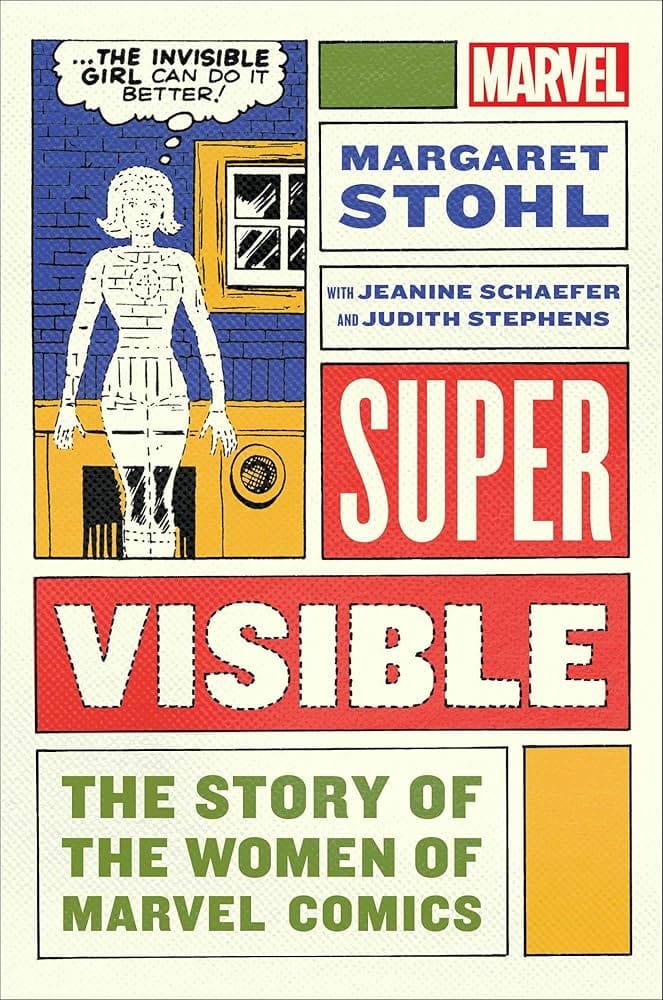Synopsis:
Inspired by the hit podcast The Women of Marvel and co-written by the #1 New York Times bestselling coauthor of Beautiful Creatures, this eye-opening and engaging book celebrates the women who have helped make Marvel one of the most successful comics and entertainment companies in the world.

Review:
Written by Margaret Stohl, novelist and comic book writer (The Life of Captain Marvel, Black Widow: Forever Red), with Jeanine Schaefer and Judith Stephens, Super Visible: The Story of The Women of Marvel Comics is an essential record of Marvel from its Mad Men 60s to its more diverse and never more popular present. Thanks to the oral histories interspersed within the book from dozens of key female figures, you get a front-row seat to the mythic origins of Marvel.
Many comic book fans pride themselves on their knowledge of comic lore, but even the most Jeopardy-ready superfans will find this essential text illuminating and rewarding. You simply can’t put the book down. As soon as Stohl delivers a peek into the famed Marvel Bullpen – The Virginia Schedule, for example – you’re pulled into the advent of the X-Men, and then their pop culture explosion in animation and beyond.
The book gives a long overdue look behind the comic book page to reveal how instrumental women have always been to the publisher. The book begins with a bang: Patricia Highsmith, the legendary writer probably best known for The Talented Mr. Ripley and The Price of Salt, the basis for the movie Carol, worked for Timely Comics in the 30s before Marvel was truly Marvel. While some names are likely familiar to comic book fans, many are not, but in quick, effortless fashion, the book introduces figures who feel like old friends.
Women responded to fan mail as Stan Lee, wrote the Bullpen Bulletin famous for its direct address from Stan to the reader, and also ran interference – literally – at the office door. As women became more creatively involved in the 1980s, with Ann Nocenti and Louise Simonson among those whose contributions were legendary for X-Men fans, Marvel Comics began to distinguish itself in the industry.
Nocenti, who elsewhere has spoken of the fight scene in superhero comics as a ‘tumor,’ laments in her comments that she felt as though she couldn’t be pigeonholed as a ‘female writing female characters.’ That led her to write several (amazing!) runs on very masculine titles like Daredevil and The Punisher. The same goes for Louise Simonson, who avoided the trap many female-led titles fell into, being canceled after only a few issues by focusing on group books. Her efforts were essential to the X-Men’s 80s and 90s legacy.
The book also establishes that women’s contributions in the indie scene benefited Marvel and the industry. Trina Robbins, among others, were instrumental in bringing women into the creative fold and then the spotlight with Big Apple Comix and other titles. Robbins’ ability to move back and forth between New York and California, as well as bring established creators with her into the indie space, had a profound influence on the 80s indie boom that eventually yielded Teenage Mutant Ninja Turtles, among others.
The book is a welcome insight into an aspect of comic book history many are unlikely to know much about, but everyone should.








Leave a Reply